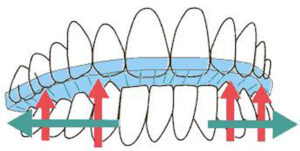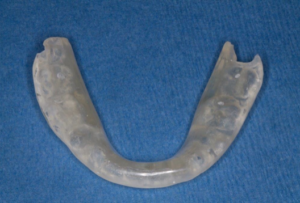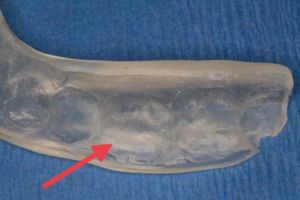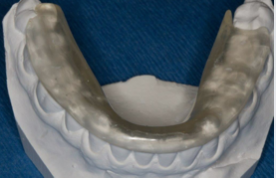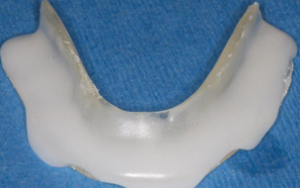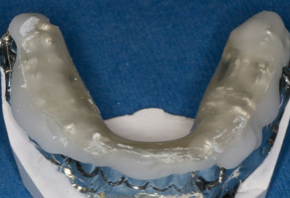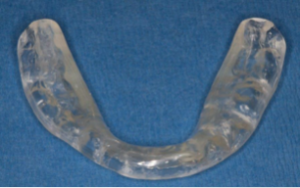A bite splint requires molar support, and particularly at the most distal tooth location. However, due to the shape of the upper and lower jaws’ relationship to one another, this is the portion of the bite splint that most frequently becomes thin and brittle, and thus, broken.
Below is a case of fractured acrylic over the location of the second molar. The arrow pointing to the inner surface of the splint shows a cloudy appearance to the acrylic: this is tartar buildup, which can result from uneven pressure between the right and left sides of the bite. As the tartar buildup thickens over time, the height of the splint changes, and can result in the failure seen.
Repair at this stage is critical to reestablish the lost molar support for the bite splint for two main reasons:
- without coverage of the most distal molar, a patient is potentially subject to supraeruption of that molar – this will change the bite of the natural teeth in an uncontrolled way.
- without the support helping the patient to sense the last molar (often the left), the patient will likely move the jaw away from the prescribed cranial reference to lateral references on the opposite side – this can lock the patient back into patterns of a R TMCC position.
Images below show instructions on how to repair the splint, restoring the molar support of the bite splint.

